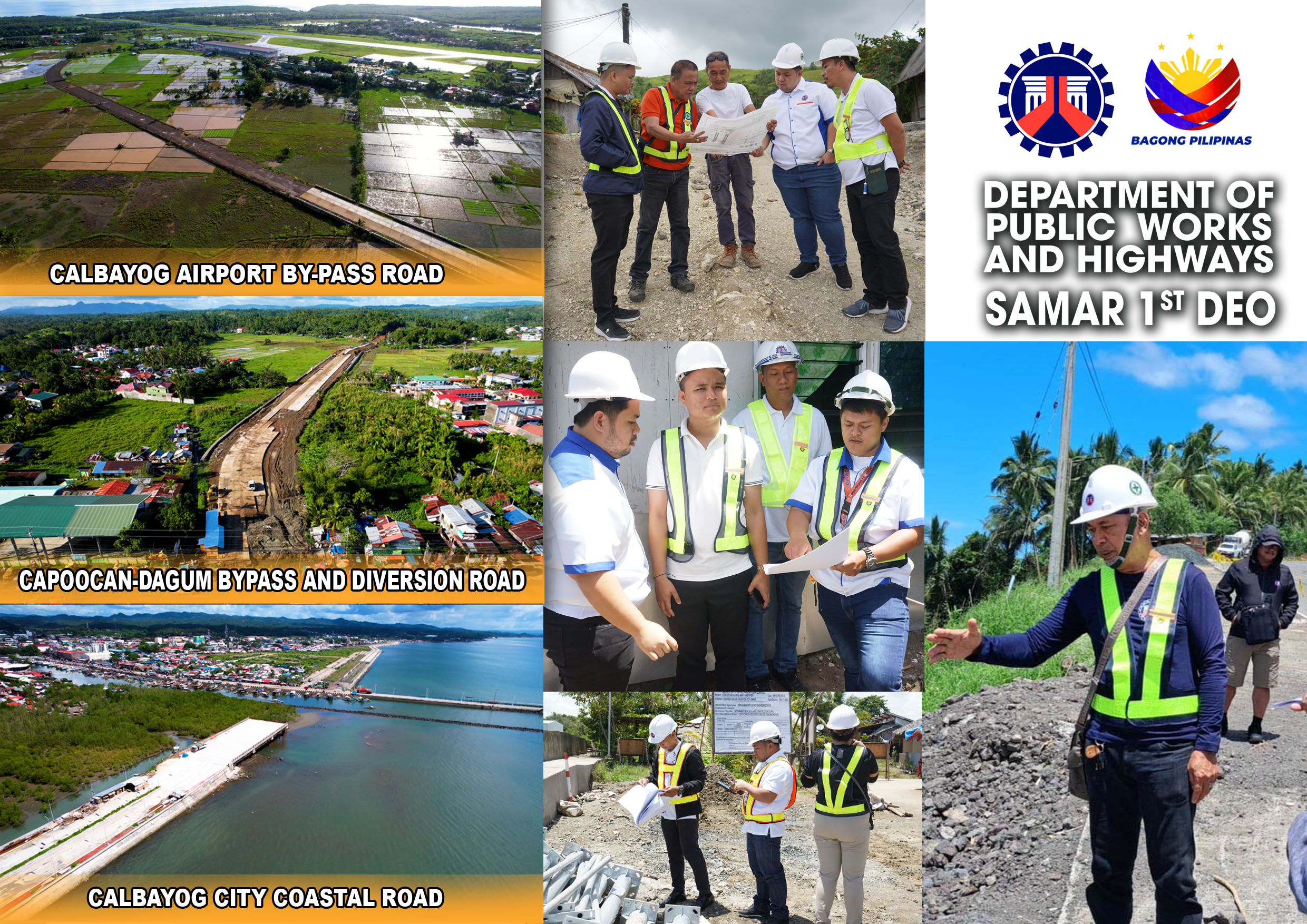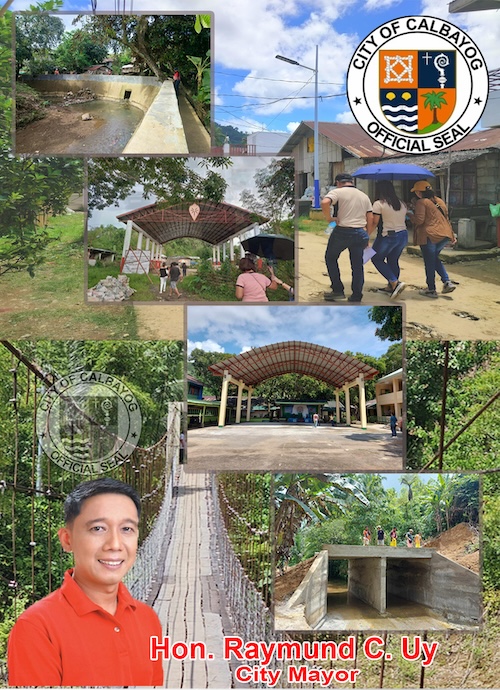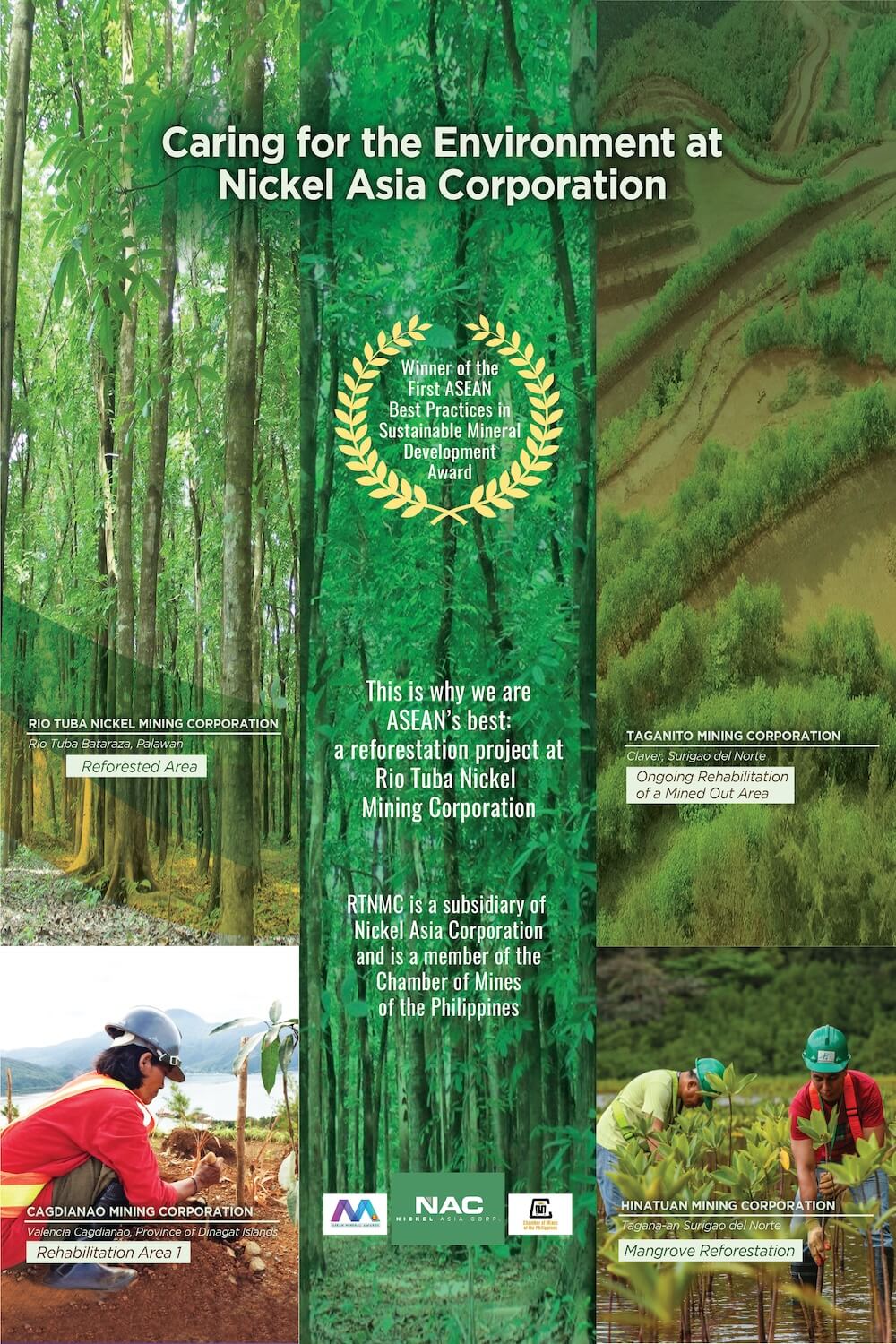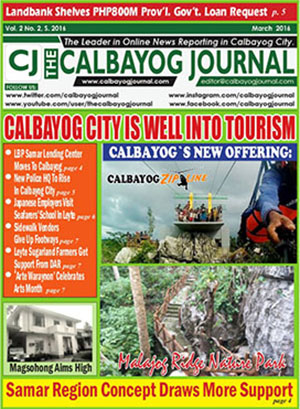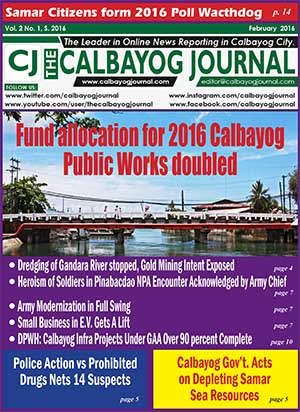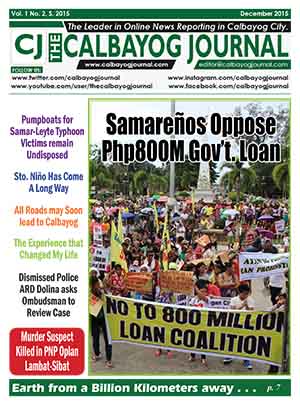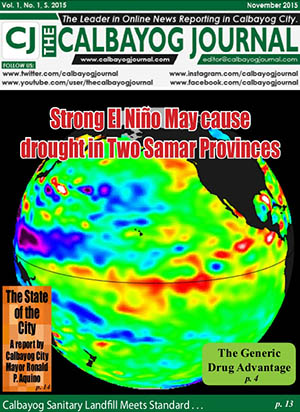
Hometown pride simply means the good and wholesome feeling of coming from and/or living in a place one can call his very own spot on planet earth. My Hometown! In our case, by simply being proud to be Calbayognons, always expressing it with a confident smile on one’s visage.
Pride in, love of and respect for one’s roots undeniably make for a desirable recipe for molding better citizenhood. How is that developed and handed down and instilled? It ought to be, but hardly alone, by parents and other household elders who themselves may not be equipped with the knowledge and opportunity to engage in good citizenship development by way of story-telling, in the first place. How many of our parents, and even teachers, possess an intimate familiarity with the history and heritage of Calbayog? Bountiful enough to hand down to our eager-eared young ones? There is no known yardstick with which to make that assessment.
Nonetheless, no one can deny that the extent or the lack of such intimacy with local heritage is indeed a good measure of the quality of our flock. The better steeped in local history, the better familiarity with our hometown’s beginnings and background, the better a knowledgeability enhances citizenhood. Without doubt, when we raise and educate our children with a sufficient dose of local lore and heritage, the safe calculation is that truly we are indeed nurturing more useful citizens who possess pride in being Calbayognons.
As a formal adjunct and component of one’s upbringing and education, there is no substitute for the classroom. How then has the classroom of Calbayog performed in this regard? Not much really. Not even a solid hour exclusively devoted by the school, whether public or private, to this specific subject. But there is, at hand, an opportunity that the collectivenon-partisan elders of the City can assess as to its merit and relevance. And then, collectively, move for its implementation.
Inclusion of “Calbayog History” as a component of classroom material is a must for our students. The details of the syllabus and its implementation would, of course, be best left to the relevant education officials.
Sometime in 2008, the City Government of Calbayog and the Museo de Calbayog published what is the most complete background material of Calbayog’s history and heritage that cover the dawn of Christianity in the islands from the late 1590s all the way up to the present, backed up by impressive bibliographical materials. It is the Calbayog Coffee Table Book. This publication became a physical reality also because of the support given by some forty individuals and families who trace their roots to Calbayog, obviously proud enough of their hometown to financially assist and sponsor the publication.
The Coffee Table Book is a documented showcase of our history and heritage as a community. At the time of its publication in 1968, the project called for only 1000 copies to be published. It is of course understandable that there has been no review of the impact the book has had upon those who purchased copies for display atop their coffee tables. Beyond thumbing through some 200 photographs in the 185-page opus of dedication and love, no survey has been taken of those who actually devoured the volume from cover to cover, perusing every page and reading the material line by line. Well, I have had such good fortune and with every reading, my pride as a Calbayognon and a Samarnon swells even more. Simply because there is much to be proud of.
The advertising blurb about this publication stated that it “will instill pride among generations of Calbayognons.” But how can that happily happen when the project was of limited numbers and of limited circulation necessarily because it was priced only for the elite of our society to acquire?
Sometime in the early 1950s, the Department of Education commissioned all municipalities of the Republic to conduct recordation of all local histories which came to be known as the “Historical Data Papers” now in the custody of the Philippine National Archives. This cultural wealth has remained in sad fallow. It would have been highly desirable for such material to have been used as historical material for the school children of every municipality to learn of their respective town’s heritage.
Unfortunately, no such event materialized. We, for Calbayog’s sake, can do something about this. For ourselves and our children.
Perhaps by action initiated by the Mayor, Vice Mayor and the City Council and supported by the various socio-civic organizations, that Calbayog Coffee Table Book can be re-edited and republished for popular circulation, distribution via even more popular pricing and be mandated as History course material, one for elementary level use and another for secondary level, even for just a three to five hour exposure for a well chosen level of every given school year.
The research and writing by the editorial board headed by Ms. Charo Nabong-Cabardo, Messrs. Rene B. Nachura and Pio Santos (R.I.P.) likewise deserve to be rewarded and be celebrated by making their academic output a component not only of a schoolroom but of every Calbayog homestead.
Nothing can best enhance hometown pride than possessing the knowledge of, and the facility to trace, ones’ roots, paying the hometown respect and reverence. That knowledge and facility can be found in a copy of the Story of Calbayog.
Pride in, love of and respect for one’s roots undeniably make for a desirable recipe for molding better citizenhood. How is that developed and handed down and instilled? It ought to be, but hardly alone, by parents and other household elders who themselves may not be equipped with the knowledge and opportunity to engage in good citizenship development by way of story-telling, in the first place. How many of our parents, and even teachers, possess an intimate familiarity with the history and heritage of Calbayog? Bountiful enough to hand down to our eager-eared young ones? There is no known yardstick with which to make that assessment.
Nonetheless, no one can deny that the extent or the lack of such intimacy with local heritage is indeed a good measure of the quality of our flock. The better steeped in local history, the better familiarity with our hometown’s beginnings and background, the better a knowledgeability enhances citizenhood. Without doubt, when we raise and educate our children with a sufficient dose of local lore and heritage, the safe calculation is that truly we are indeed nurturing more useful citizens who possess pride in being Calbayognons.
As a formal adjunct and component of one’s upbringing and education, there is no substitute for the classroom. How then has the classroom of Calbayog performed in this regard? Not much really. Not even a solid hour exclusively devoted by the school, whether public or private, to this specific subject. But there is, at hand, an opportunity that the collectivenon-partisan elders of the City can assess as to its merit and relevance. And then, collectively, move for its implementation.
Inclusion of “Calbayog History” as a component of classroom material is a must for our students. The details of the syllabus and its implementation would, of course, be best left to the relevant education officials.
Sometime in 2008, the City Government of Calbayog and the Museo de Calbayog published what is the most complete background material of Calbayog’s history and heritage that cover the dawn of Christianity in the islands from the late 1590s all the way up to the present, backed up by impressive bibliographical materials. It is the Calbayog Coffee Table Book. This publication became a physical reality also because of the support given by some forty individuals and families who trace their roots to Calbayog, obviously proud enough of their hometown to financially assist and sponsor the publication.
The Coffee Table Book is a documented showcase of our history and heritage as a community. At the time of its publication in 1968, the project called for only 1000 copies to be published. It is of course understandable that there has been no review of the impact the book has had upon those who purchased copies for display atop their coffee tables. Beyond thumbing through some 200 photographs in the 185-page opus of dedication and love, no survey has been taken of those who actually devoured the volume from cover to cover, perusing every page and reading the material line by line. Well, I have had such good fortune and with every reading, my pride as a Calbayognon and a Samarnon swells even more. Simply because there is much to be proud of.
The advertising blurb about this publication stated that it “will instill pride among generations of Calbayognons.” But how can that happily happen when the project was of limited numbers and of limited circulation necessarily because it was priced only for the elite of our society to acquire?
Sometime in the early 1950s, the Department of Education commissioned all municipalities of the Republic to conduct recordation of all local histories which came to be known as the “Historical Data Papers” now in the custody of the Philippine National Archives. This cultural wealth has remained in sad fallow. It would have been highly desirable for such material to have been used as historical material for the school children of every municipality to learn of their respective town’s heritage.
Unfortunately, no such event materialized. We, for Calbayog’s sake, can do something about this. For ourselves and our children.
Perhaps by action initiated by the Mayor, Vice Mayor and the City Council and supported by the various socio-civic organizations, that Calbayog Coffee Table Book can be re-edited and republished for popular circulation, distribution via even more popular pricing and be mandated as History course material, one for elementary level use and another for secondary level, even for just a three to five hour exposure for a well chosen level of every given school year.
The research and writing by the editorial board headed by Ms. Charo Nabong-Cabardo, Messrs. Rene B. Nachura and Pio Santos (R.I.P.) likewise deserve to be rewarded and be celebrated by making their academic output a component not only of a schoolroom but of every Calbayog homestead.
Nothing can best enhance hometown pride than possessing the knowledge of, and the facility to trace, ones’ roots, paying the hometown respect and reverence. That knowledge and facility can be found in a copy of the Story of Calbayog.



